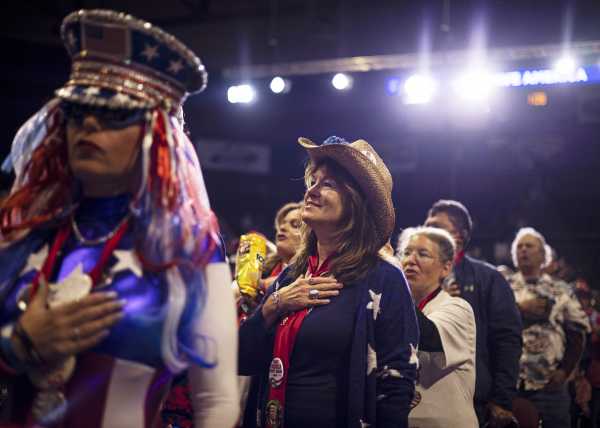
GREEN RIVER, Wyoming — The Wyoming congressional primary on Tuesday has been painted as a referendum on Donald Trump. It’s a race incumbent Liz Cheney is likely to lose to Harriet Hageman because of her efforts to propel Trump into political oblivion after January 6 and one in which the former president has personally intervened to seek revenge.
But in the sparsely populated state where their ultra-nationalized race is playing out, this primary is just one more battle in a civil war between factions in the only party with any political relevance. Trump is not at the root of the political divide between Republicans here but rather has been an accelerant in a long-running fight between establishment Republicans and a new guard of more doctrinaire conservatives.
“There’s a clear dividing line: the successors to the Tea Party movement, which are now controlling the state party,” said Tim Stubson, a former Republican state representative. “But on the other side of the line, the mainline Republicans, you still have a lot of pro-Trump people. … There is a very sharp line there, but Trump is not the dividing line.”
The divide is as much about rhetoric as policy, and it has fueled much of the state’s politics in recent years, resulting in de facto tickets as the two wings of the party duel for primacy in a state where Democrats make up less than 14 percent of the registered voters.
As in many other aspects of American politics, Donald Trump isn’t responsible for the fissures among the Wyoming GOP — he just made them wider and deeper. The new guard here sees a Republican Party that merely tries to do enough to appease conservatives and is insincere at best in adhering to the party platform written by activists. The establishment sees a fanatical fringe that “views everyone that compromises a little bit as a RINO,” said Cale Case, a Wyoming state senator affiliated with the more traditional wing of the GOP.
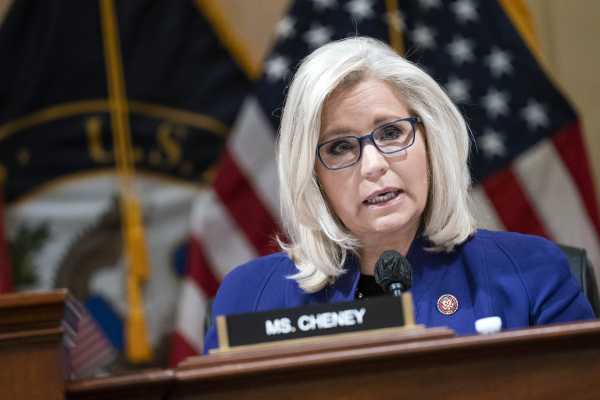
The result is that Cheney’s primary does not just represent a national battleground between Trump and his most ardent opponent within the Republican Party over the former president’s repeated lies. While Cheney’s role on the January 6 committee and the continued political interventions of the former president from Mar-a-Lago dominated the national conversation about the race, the dynamic is much different on the ground. Cheney’s race is yet another front in the internecine conflict that has dominated Wyoming Republican politics for years, long before Trump became personally involved.
The rise and split of Wyoming Republicans
Wyoming is different. It’s the most sparsely populated state in the continental United States, with fewer than 600,000 people spread out across an area larger than the United Kingdom. It’s also remarkably homogenous, one of the whitest states in the country and one without any major cities. The state’s capital and largest city, Cheyenne, is only the 357th largest metro area in the country, lagging behind obscure burgs like Fond du Lac, Wisconsin, and Gadsden, Alabama. It’s also remarkably Republican. Democrats haven’t controlled even a single chamber of the state legislature since the mid-1960s, and it gave Donald Trump the largest share of the vote of any state in the union in 2020 — nearly 70 percent.
The state last elected a Democrat to federal office in the 1970s. Rep. Teno Roncalio decided not to seek reelection in 1978, which gave former White House chief of staff Dick Cheney an opening to run. But it was willing to elect Democrats to the governor’s mansion into the aughts. “They’re willing to let you govern here where they can watch you closely, but they’re not gonna send you off to Washington,” former two-term Democratic governor Mike Sullivan told Vox.
Wyoming’s politics always had a libertarian strand, not unusual in a Western state where half of the land is owned by the federal government. But for a state that has never exactly leaned left, it has still notably shifted right in recent decades, and more quickly in recent years, driven by trends that are not unique to Wyoming. The most notable shift in recent decades though has been in the state’s southern tier. That region, once dominated by the Union Pacific Railroad, has taken a hard right turn driven by the same cultural issues that have led blue-collar workers in rural areas across the country to abandon the Democratic Party in recent decades.
Dave Freudenthal, a former two-term governor who was the last Democrat elected statewide in 2006, recalled that when he showed up to talk to unionized steelworkers in the 1970s as a political staffer, their concerns were about repealing the Taft-Hartley Act. When he showed up as governor three decades later, the steelworkers there were more concerned about hunting, fishing, and public access. The shift has been amplified by the state’s reliance on the fossil fuels industry as Wyoming has become the biggest coal producer in the United States as well as a major producer of oil and natural gas, industries that rely on Republicans to block efforts to regulate them. (It’s perhaps ironic that the state owes its coal primacy to the Clean Air Act — its coal has a far lower sulfur content than that produced elsewhere in the country, which created a boom in demand.)
Democrats have been left with two slim footholds. In the far western corner of the state, Teton County, home to the millionaire resort community of Jackson Hole, is a liberal stronghold where Joe Biden won by nearly 40 points. And in Albany County, home to the University of Wyoming, Biden narrowly won in 2020 after Hillary Clinton narrowly lost it in 2016.
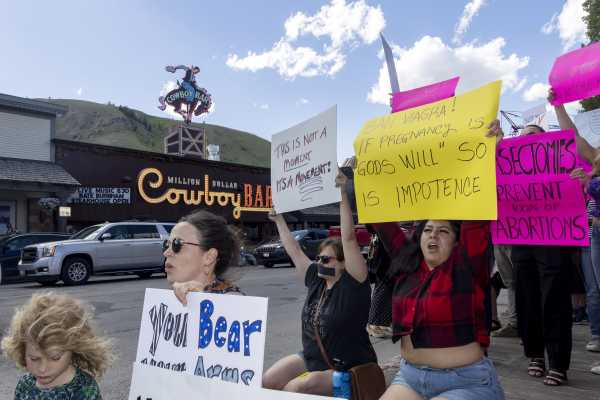
With the disintegration of the Wyoming Democratic Party, all the action focused on the Wyoming Republican Party. It was the only option for aspiring politicians who wanted to run for office, and for voters, the Republican primary was the only meaningful election. On the national level, the state was long represented by traditional center-right Republicans. However, everything started to change after Barack Obama’s election and the rise of the Tea Party. As Pat Sweeney, a Republican state representative from Casper, put it, “Everything started with the failed Tea Party movement, moved the needle in my mind to Campaign for Liberty, Ron and Rand Paul. So that element gained a little more traction and a little more traction.” The result is that this new guard eventually gained control of the state party apparatus as well as the local Republican parties in all but the state’s two most populous counties.
This factional divide, not Trump, is what animates the split in Wyoming. But what it divides is not so clear. Establishment Republicans argue that the split is not actually about broad policy differences but simply vibes. As Stubson put it, “It’s not policy. I mean, everybody’s gonna say ‘pro-Second Amendment,’ everybody’s gonna say ‘we’re pro-life.’ Everybody’s gonna say ‘we’re pro-oil, -gas, and -coal.’ It’s [about] who is flipping those levels of power? It’s as simple as that.”
In contrast, those in the new guard see the divide as explicitly ideological. Darin Smith, another former 2016 House candidate who dropped a bid against Cheney in 2022 to avoid dividing the vote, told Vox “We have a uni party. We have the left wing of the Republican Party, and we have a Republican Party that believes in the Republican platform, and the left wing of the Republican Party, they would be Democrats in most other states.” In his view, citing issues like abortion, the establishment wing “doesn’t reflect the Republican party’s platform or the values of our state. And I think most people are fed up with that.”
It’s not just abortion that’s been a hot button in a state that passed a trigger ban on abortion only months before the Dobbs decision overruled Roe v. Wade. The new guard was bitterly opposed to the comparatively meager Covid restrictions imposed during the pandemic, including an indoor mask mandate for four months in the winter of 2020, and has long blocked efforts to expand Medicaid in the Cowboy State.
Doug Gerard, a longtime Republican activist in northeast Wyoming who maintains a website that tracks state legislators’ voting records, said plainly of the establishment wing of the party, “They used to be in control, and they are mad they are no longer in control.”
The divide has become explicit under the leadership of the current state GOP chair, Frank Eathorne, who has been tied to the Oath Keepers and was on restricted Capitol grounds on January 6. At the most recent state party convention in May, the delegation from Laramie County, the state’s biggest, was not seated, and the delegation from Natrona County, the second largest, was slashed to the bone. Both counties are establishment strongholds, while the new guard is strongest in rural areas of the state.
An anonymous website tied to the new guard faction, WyoRino.com, made things even more vitriolic. Every month, it targets a different state legislator for being a RINO (Republican in name only). That has become a badge of honor among some in the establishment faction. Sweeney noted with some humor that he had been RINO of the month twice. The intraparty tensions prompted several people Vox spoke to recall a familiar line from Alan Simpson, the state’s longtime Republican senator: “Everything in Wyoming is political, except for politics. That’s personal.”
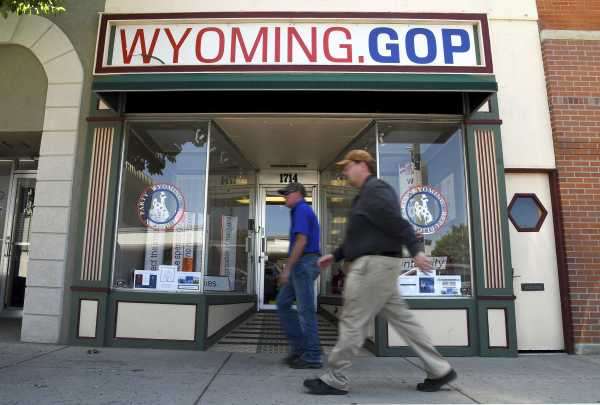
The divides are also reflective of a nationalization of politics as local media dies off and increasingly voters rely on national outlets and social media for information. At a candidates’ forum for secretary of state in Casper on Monday, the candidate affiliated with the new guard, state Rep. Chuck Gray, railed broadly against the media, falsely claiming the 2020 presidential election was “clearly rigged” while casting doubt on the integrity of the election in Wyoming, and made a dig at “Cheyenne insiders sipping Chablis.” With just an occasional alternation of a proper noun, Gray, whose campaign has hosted screenings of the conspiracy-laden movie 2000 Mules, could have been running in a Republican primary almost anywhere in the country.
Speaking to Vox afterward, Tara Nethercott, Gray’s establishment-affiliated opponent, noted how much “national politics and national narratives and divisiveness” has changed what she saw as Wyoming’s traditionally “live-and-let-live type of culture.” In her view, “some of it does have to do with the media … and where Wyomingites get news, and a lot of that is not as local as it should be. And so we are required to turn outward and turn on some of the national news networks that I think sometimes focus on ratings instead of responsible journalism, and that no doubt fuels divisiveness and acrimony.”
Case, the Wyoming state senator, who is more establishment-leaning, described the new guard “as a lot of people who haven’t been here very long … and they are very angry they think the path forward is to have minimal government and minimal taxes, and they like that because a lot of them that’s what’s brought them to Wyoming.”
Gerard, a native of upstate New York who bemoaned what he saw as the negative impacts of liberal policies in his hometown of Rochester, noted that there was a strong conservative lean to newcomers like him who were familiar with the negative impacts of left-wing governance and wanted to protect Wyoming from “the natural creep of liberalism.” Then again, this is not a hard-and-fast rule. After all, Cheney grew up in Northern Virginia, while Hageman brags about being “a fourth-generation Wyomingite.”
What Cheney’s much-hyped race means for other Wyoming politicians
Cheney’s background has always been the subject of some tension in the state. The Congress member rankled some for mounting a brief primary challenge to then-incumbent Sen. Mike Enzi in 2014 focused heavily on her family legacy and was subject to attacks for being a carpetbagger when she ran for Congress in 2016. However, as Stubson, one of her opponents then, told Vox, “we tried to tag her as the carpetbagger. And, you know, Virginia’s third senator and all that sort of stuff … there was some traction there. But after she’s worked for six years, with people around the state representing them, that argument, it goes away.”
The race between Cheney and Hageman has gotten disproportionate attention because of how the broader national issues intersect with the preexisting tensions in Wyoming. Supporters of both candidates paint the race in tones that imbue it with far more importance than a normal congressional primary on the high plains.
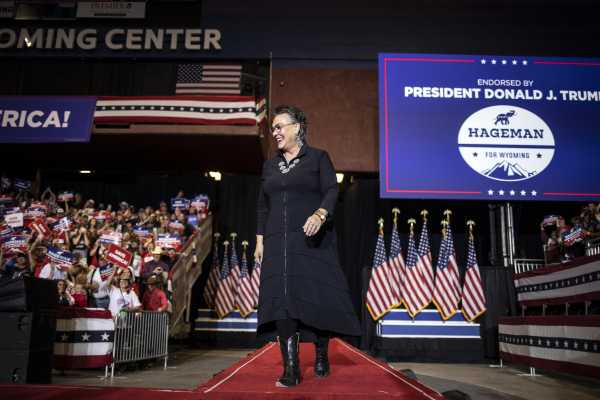
As Smith described the stakes, “This is about worldview. It’s about whether we continue to be a constitutional republic, that stands on the Constitution, or whether our rights come from the Cheneys and come from the elites … we want to have our freedoms, and you’re not going to push us into the culture that you want.”
In contrast, Cheney’s campaign has focused entirely on Donald Trump and his lies around the 2020 election. Her closing ad, launched last week, featured her father saying directly to the camera that “In our nation’s 246-year history, there has never been an individual who is a greater threat to our republic than Donald Trump.”
But what has particularly sparked aversion from the new guard is Cheney’s open efforts to court Democrats to change their registration for the congressional primary. It’s not simply that she is backed by those they view as RINOs or, even in some cases, crypto-Democrats within the GOP, but that she is openly courting the thin remainder who have maintained their party registration to support her. The expectation is that those Democrats who do cross over will not only back Cheney but check the box for establishment candidates up and down the ballot.
While the new guard may have control of the party apparatus, both the incumbent Republican governor, Mark Gordon, who is also facing a primary challenge on Tuesday, and his predecessor Matt Mead are comparative moderates. At the same time, the crisscrossing allegiances both locally and nationally mean that Cheney is likely to run behind other establishment candidates — especially running against Hageman who, while supported by the Eathorne faction, also has deep establishment ties and even supported Cheney’s abortive Senate bid in 2014.
A post-Cheney Wyoming
Hageman is considered the favorite on Tuesday, and short of any surprises, Wyoming politics will quickly slip out of the national spotlight after that.
Meanwhile, its political factions will continue to spar and its economic challenges seem likely to mount. The state government is dependent on a severance tax on coal and oil for its revenue as the national transition toward renewable fuels accelerates. It also has difficulty attracting newcomers in a state with a deep aversion to change, where the winters are cold and the wind howls across the high plains. Freudenthal quoted a former constituent as saying “the wind was Wyoming’s population control and if we didn’t have wind, more people would want to live here and we wouldn’t want to live here.”
Those who do arrive will be governed by politicians from one divided party. And, like wherever they came from, the roots of that division go a lot deeper than Donald Trump.
Will you support Vox’s explanatory journalism?
Millions turn to Vox to understand what’s happening in the news. Our mission has never been more vital than it is in this moment: to empower through understanding. Financial contributions from our readers are a critical part of supporting our resource-intensive work and help us keep our journalism free for all. Please consider making a contribution to Vox today.
Sourse: vox.com